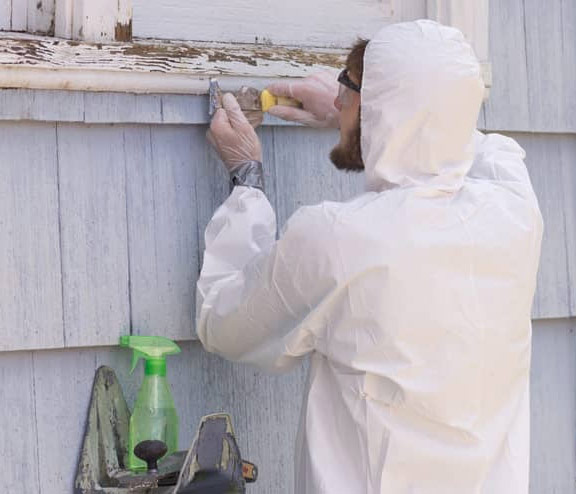Crucial Devices and Approaches for Reliable Lead Offense Clean-up
Dealing with lead offenses efficiently demands an extensive strategy that blends the right tools with critical approaches. Simultaneously, the use of specialized clean-up devices, such as HEPA vacuum cleaners and lead-specific cleaning representatives, is essential for complete contaminant removal. Efficient control techniques, including plastic bed linen and negative air pressure systems, are necessary to prevent the spread of dangerous products.
Individual Safety Equipment
Personal protective devices (PPE) is an important part in the effective administration of lead contamination cleanup. The essential PPE for lead clean-up consists of respirators, protective apparel, gloves, and eye defense.
Respirators, particularly those furnished with HEPA filters, are essential for filtering system airborne lead fragments, preventing inhalation. Correct fit and seal checks are crucial to guarantee their efficiency. Protective clothes, including coveralls and non reusable fits, avoids lead dust from sticking to employees' garments, decreasing the risk of second contamination. Handwear covers, usually made of nitrile or latex, secure the skin from straight contact with lead, while safety and security goggles or full-face guards safeguard the eyes from dust and particles.
Additionally, rigorous training on the correct use and maintenance of PPE is crucial. Workers have to be informed on wearing and doffing procedures to avoid contamination. Normal evaluations and substitutes of PPE elements are essential to maintain their safety capabilities, guaranteeing a secure and compliant clean-up procedure.
Specialized Cleanup Equipment

Another important device is the wet/dry vacuum cleaner, which can successfully clean up both dirt and liquid pollutants. These vacuum cleaners frequently include HEPA filters to provide an additional layer of security. Damp wipes or tack fabrics are likewise crucial for surface cleaning; they are especially designed to capture and hold lead bits, minimizing the threat of spreading contamination.
For more stubborn deposits, specialized lead-removal cleaner are called for. These representatives are formulated to break down lead bits, making them much easier to get rid of. Scrub brushes with tough bristles can aid in this process, especially on rough surface areas where lead dirt often tends to stick extra highly.
In addition, encapsulants are used to seal lead-contaminated surfaces, preventing the release of lead dust. These specialized paints and coverings are developed to stick to different substrates, offering a long-term service for lead containment.
Effective Containment Methods
Reliable control approaches are critical in minimizing the spread of lead contamination throughout cleaning activities. Executing robust containment strategies makes certain that lead fragments do not migrate to untouched locations, consequently securing both workers and the environment. One primary approach is using plastic sheet to seal contaminated areas. Durable polyethylene barriers can be installed from my site flooring to ceiling to produce a controlled job location, substantially decreasing the risk of air-borne lead dust dispersal.

To improve containment, encapsulants can be put on surfaces that are not being gotten rid of or disrupted. These specialized coverings bind lead dirt, decreasing its availability for resuspension. Furthermore, all personnel have to use ideal Personal Safety Devices (PPE), consisting of respirators and disposable matches, to stop contamination spread.
Safe Disposal Practices
Ensuring risk-free disposal techniques is an important component in the administration of lead contamination cleanup. Appropriate disposal mitigates the danger of lead coming back the environment and threatening public health. The primary step is to identify and segregate lead-contaminated waste from various other materials. Protected control using durable, watertight containers is vital to stop splilling during transport.
Carrying lead waste requires adherence to stringent guidelines. Utilizing qualified hazardous waste carriers guarantees that the products are managed sensibly. Documents, consisting of manifests detailing the type and quantity of waste, should accompany shipments to track the waste from the site of origin to its final disposal destination.
Designated contaminated materials disposal facilities are equipped to handle lead-contaminated materials securely. These centers usually use innovative approaches such as stablizing, solidification, or chemical therapy to reduce the effects of the lead before disposal. Landfilling in specialized, lined areas that avoid leachate from contaminating groundwater is a common technique for last disposal.
Normal training for workers associated with lead waste disposal is crucial to keep safety and security requirements and stop unintentional direct exposure. By sticking to these methods, organizations can significantly minimize the environmental and health and wellness effects connected with lead contamination.
Regulatory Compliance Tips

Sticking to regulatory conformity is critical in the effective execution of lead contamination cleanup. Recognizing and complying with government, state, and regional check my blog regulations makes certain not only the safety and wellness of individuals yet likewise the find out here now legal and monetary well-being of the clean-up organization. The Epa (EPA) establishes strict criteria, such as the Lead Remodelling, Repair, and Painting (RRP) Regulation, which mandates appropriate certification and training for service providers dealing with lead-based tasks.
Compliance begins with a complete assessment of suitable regulations and policies. Organizations must remain upgraded on any kind of legislative modifications, which can be promoted with normal training sessions and registering for industry updates. Documentation is one more essential compliance aspect; preserving in-depth documents of all tasks, consisting of examination records, employee training logs, and disposal manifests, is important.
Additionally, involving with certified lead assessors or risk assessors makes sure that lead dangers are appropriately recognized and minimized. Companies need to implement making use of Individual Safety Tools (PPE) and make certain that safety and security methods are purely adhered to. Finally, clear interaction with stakeholders, consisting of workers, clients, and regulatory bodies, will cultivate a society of conformity and responsibility, eventually adding to a more secure and more efficient lead clean-up process.
Final Thought
Efficient lead infraction cleaning necessitates the combination of specialized devices and tactical techniques to ensure security and efficiency. Personal protective tools (PPE) safeguards employees from exposure, while risk-free disposal techniques and rigorous adherence to regulatory compliance are necessary for responsibly managing harmful waste.